
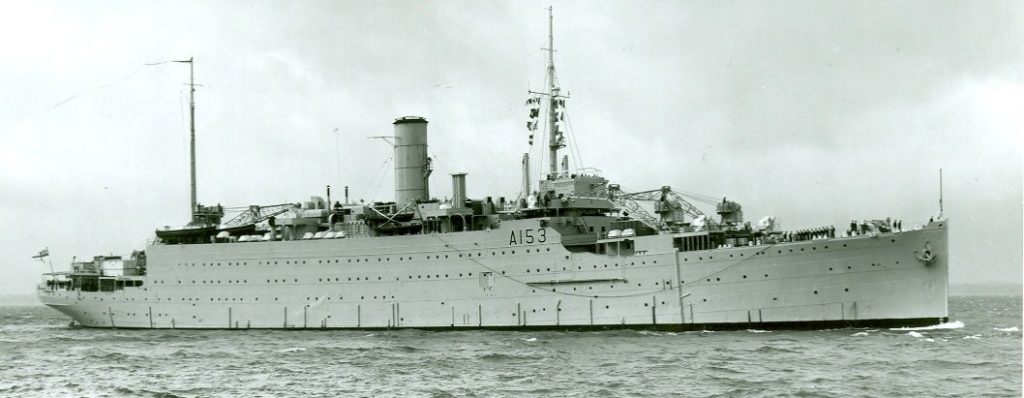
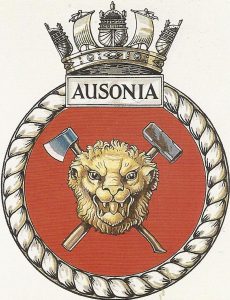
Few ships have given such wonderful service as the Steam Ship Ausonia. A period of almost twenty years on the North Atlantic, first as a passenger liner, then as an Armed Merchant Cruiser, finally another twenty three years as one of the Royal Navy’s most important Heavy Repair Ships.
This remarkable old ship was built by Armstrong Whitworth & Co Ltd at their shipyard in Walker-on-Tyne and was launched as RMS Ausonia on the 22nd March 1921. She was one of six, ‘A’ Class, intermediate liners built for the Cunard Line and made her maiden voyage from Liverpool on the 31st August 1922. Essentially an emigrant ship with a large cargo capacity, she had a crew of 270 and could accommodate 510 cabin class and 1178 third class passengers and she served the London to Montreal route throughout the 1920’s and 30’s. The ships accommodation was altered in 1927 to include an additional tourist class, but this work was reversed in 1939, when the accommodation reverted back to cabin and third class only.
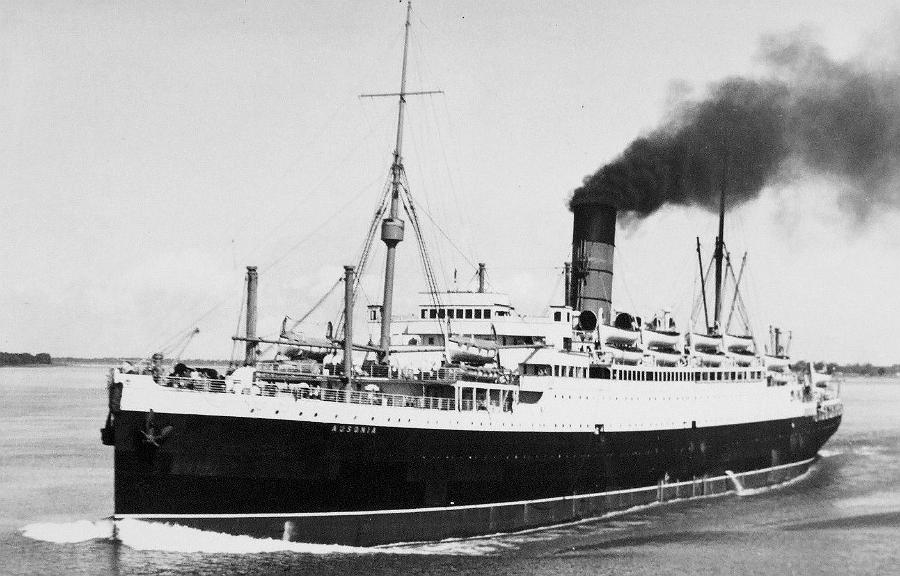
The RMS Ausonia in 1922.
This phase of her career ended with the outbreak of the Second World War, the Ausonia being promptly requisitioned by the Admiralty to serve as an Armed Merchant Cruiser. After being refitted for this purpose with eight 6” guns she sailed in November 1939 to Halifax, Nova Scotia to join the Halifax Escort Force as an escort for the Atlantic convoys. In March 1941 she made a patrol in the Denmark Strait before being refitted at Belfast. Whilst there, both she and the dockyards were bombed. The first months of 1942 were spent carrying out patrols in the Sargasso Sea in the middle of the Atlantic until March, when approval was given to convert her into a Fleet Heavy Repair ship and she sailed to Portsmouth for conversion.

The Armed Merchant Cruiser HMS Ausonia in October 1941 with her light grey superstructure and dark grey hull camouflage (Photo Campbell Finley).
Subsequently bought as a permanent unit of the Royal Navy she was commissioned in April 1944 and left the UK in June to join the Eastern Fleet. She spent nearly a year at Aden in Yemen, repairing vessels for the Burma campaign before going to Bombay for a refit. From there she moved to Trincomalee in Ceylon, where she remained for a year repairing ships damaged by kamikaze attacks. In June 1946 she left the East Indies Fleet and became part of the reserve fleet at Gareloch on the west coast of Scotland.
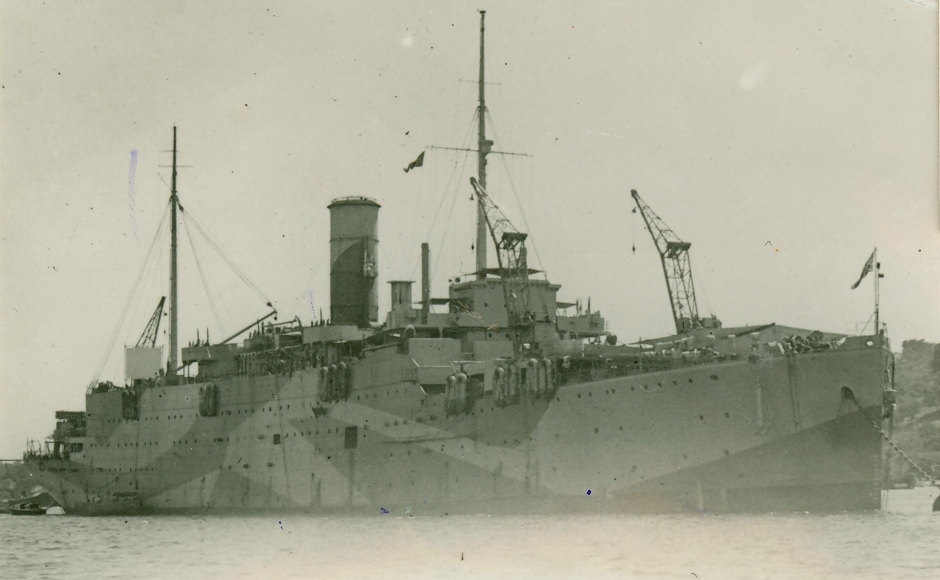
The Heavy Repair Ship HMS Ausonia at Trincomalee during her commission with the East Indies Fleet 1945 to 1946.
Between 1947 and 1949 she was the flagship of the Officer Commanding the reserve fleet at Chatham. The next few years were spent in Chatham and Scotland and finally in preservation at the shipyards at Millwall, London. In September 1958, following a refit at Devonport, she left for Malta to serve as the repair ship of the Mediterranean Fleet.
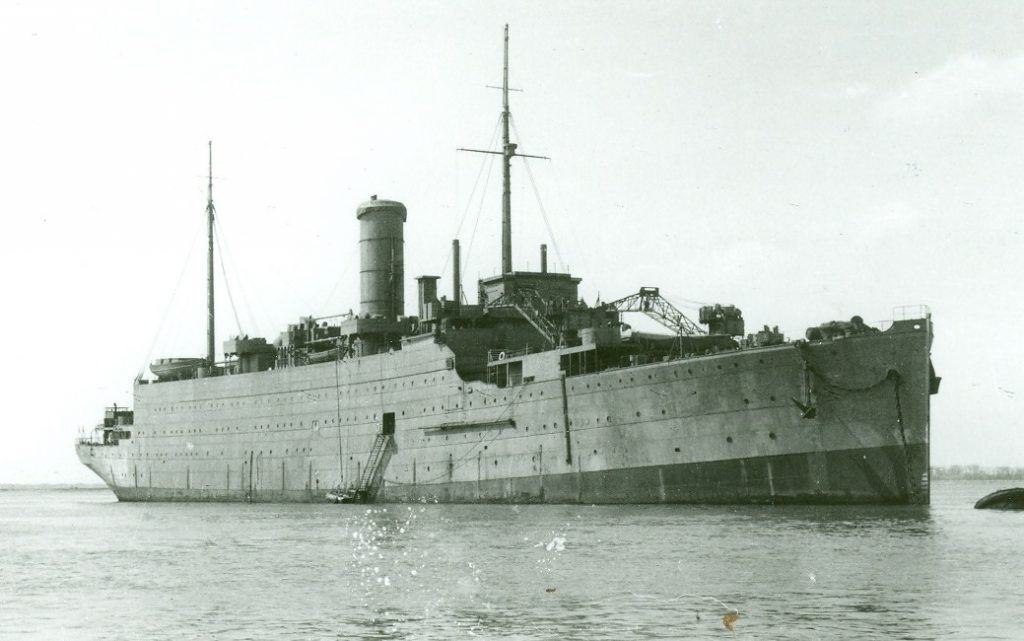
HMS Ausonia laid up at Sheerness in April 1950.
In June 1962 she became the flagship of the Flag Officer, Mediterranean Flotillas and whilst in Malta she also acted as the accommodation and repair ship for the 5th Submarine Division. In August 1964 she arrived in Portsmouth from Malta to pay off for disposal after the gradual reduction of British forces in Malta had disbanded the 5th Submarine Division.

HMS Ausonia in Lazaretto Creek, Malta, flagship to the Flag Officer Mediterranean Flotillas.
A year later in September 1965 and after 44 years service, she was sold to a Spanish ship breakers and on the 13th November she left Portsmouth under tow for Castellon and the cutting torches of the scrap yard.
So past the last of the Cunard White Star, ‘A’ Class liners.
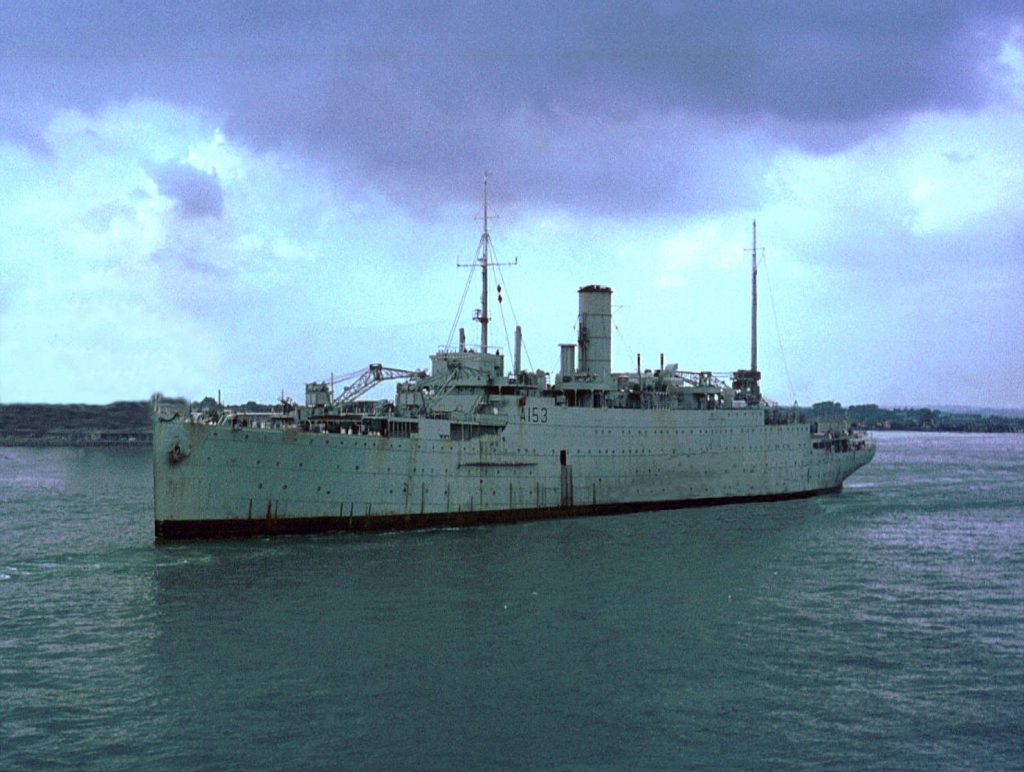
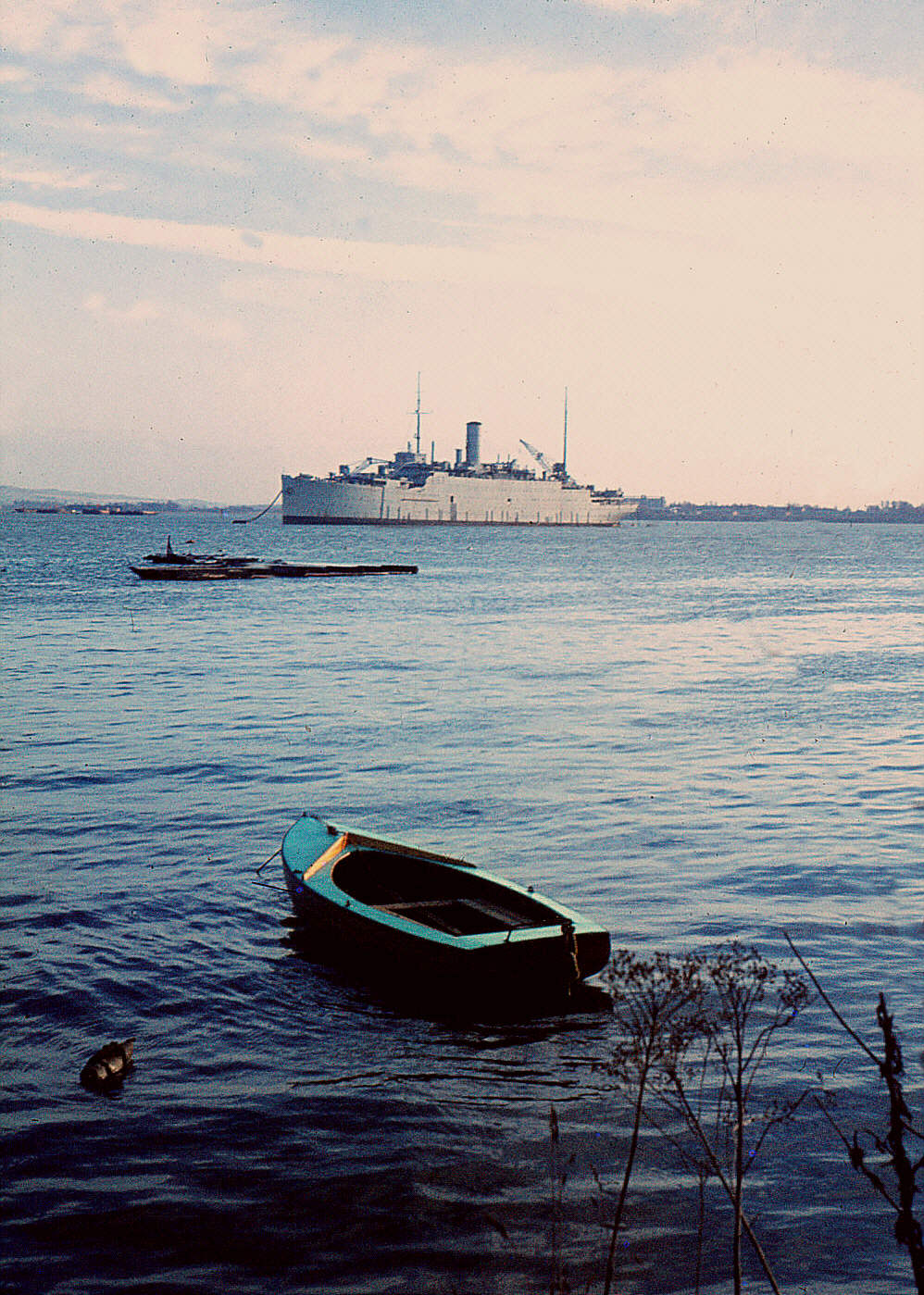
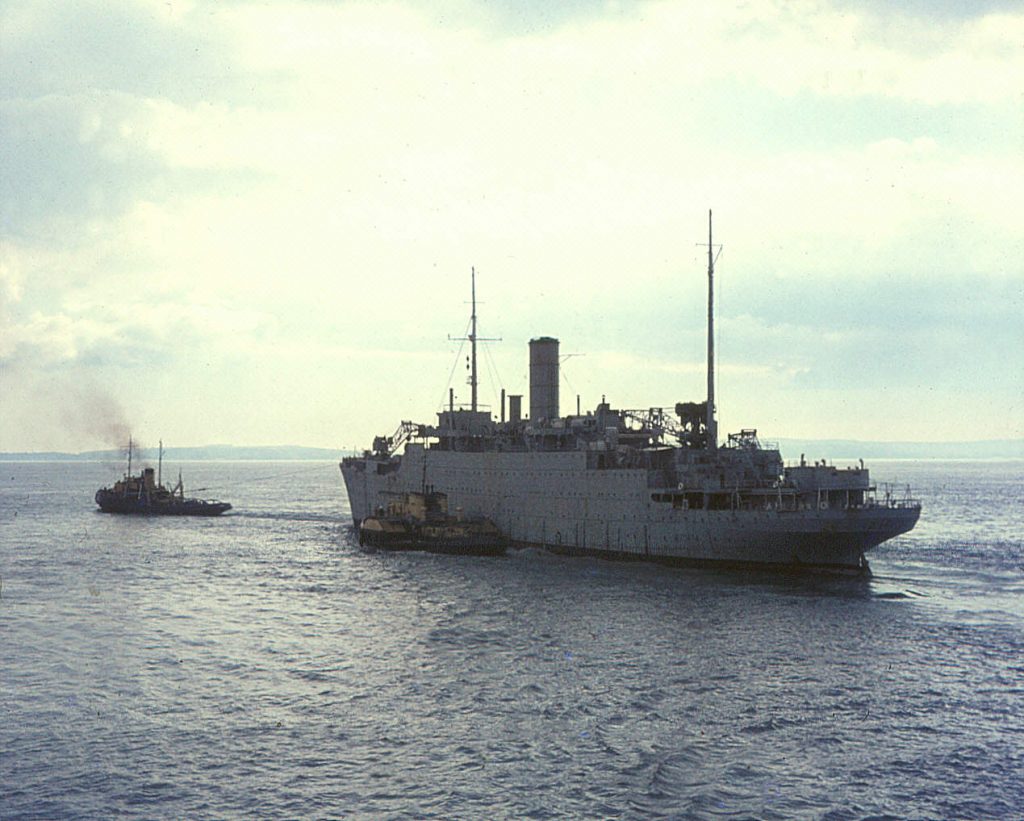
HMS Ausonia leaving Portsmouth under tow on the 13th November 1965, these are almost certainly the last photographs ever taken of the ship. (Copyright Solent Archive)
Site designed by Sam Ryder (grandson of HMS Ausonia crew member, PO Ron Ryder).
If you can contribute in any way to this web site, a record of the Ausonia’s history, but especially with photographs and memories, please get in touch using peterjryder@gmail.com